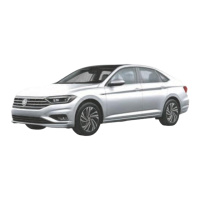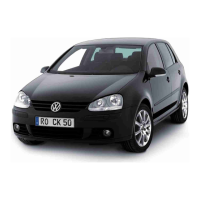If the vehicle keys are used carelessly or
carelessly, accidents and serious injuries can
occur.
•
When leaving the vehicle, always switch off
the engine and never leave any keys inside
the vehicle. Otherwise, a child or other person
The unauthorised person could lock the vehicle,
start the engine or switch on the ignition,
allowing them to operate electrical equipment
such as power windows. This could cause
serious injury.
•
When locking the vehicle, never leave a child
or any person who may need help inside the
vehicle. In the event of an emergency
The vehicle is not able to leave the vehicle or
to fend for itself. For example, depending on the
time of year, very high temperatures can be
reached in a closed vehicle.
The use of very low or very low temperatures
can lead to serious injury and illness or even
death, especially in the case of young children.
•
Never run or leave the engine running in
closed or unventilated rooms. The exhaust
gases from the engine contain, among other
things, monoflourocarbons.
Carbon monoxide, a colourless, odourless,
toxic gas. Carbon monoxide can cause
unconsciousness and death.
•
Do not attach any objects to the vehicle key that
could damage the vehicle.
sen more than 100 g (3.5 oz) in total.
The risk of serious injury can be reduced when
the engine is running or when starting the
engine.
•
Never run or leave the engine running in
enclosed or unventilated areas. Fumes from
Engine exhaust contains, among other things,
carbon monoxide, a toxic, colourless, odourless
gas. Carbon monoxide can cause
unconsciousness and death.
•
Never run or leave the engine running if oil,
fuel or other liquids and operating media are
under or near the vehicle.
If the vehicle is damaged or if any of these
substances escape from the vehicle, e.g. as a
result of damage.
•
Never leave the vehicle unattended with the
engine running, especially if it has a gear or
gear ratio engaged. The ve-
The vehicle could suddenly start moving, or
something unusual could happen that could
cause damage, fire and serious injury.
•
Never use cold start engine sprays. These
aerosols can explode
and cause a sudden increase in the
engine.
the engine starts. Place the gear lever in
neutral.
—
Vehicles with automatic gearbox: Move the
selector lever to position N or engage the parking
lock P.
—
Vehicles with ignition lock: Continue to turn the
key in the ignition lock without pressing the
accelerator. Once the engine is running, release
the key.
—
Vehicles with push-button ignition and starter:
Press the ignition button and start
→ p. 117 without pressing the accelerator. A
valid vehicle key must be inside the vehicle for
the engine to start. Once the engine has
started, release the ignition button and start the
engine.
—
If the engine does not start, stop the attempt
and repeat it after approx. 1 minute.
—
Vehicles with ignition and starter button: If the
vehicle was locked with the vehicle key, the
button is deactivated. If you are inside the
vehicle and have to start the engine, unlock the
vehicle first or carry out an emergency start →
page 120.
Before leaving the vehicle, always switch off
the ignition manually and, if the ignition is
switched off, turn the ignition off manually.
In this case, please observe the indications on the
instrument panel display.
If the vehicle is left for a long period of time
with the ignition switched on, the battery will
12 volts could be discharged and the engine could
not be started.
Starting the engine
—
Vehicles with ignition lock: Switch on the ignition
→ page 116.
—
Vehicles with push-button ignition and starter:
Press the ignition button once and start.
The ignition is switched on.
—
Depress the brake pedal and hold it down until
the electronic parking brake is disengaged.
—
Vehicles with manual gearbox: Depress the
clutch pedal fully and hold it down until the clutch
is released.

